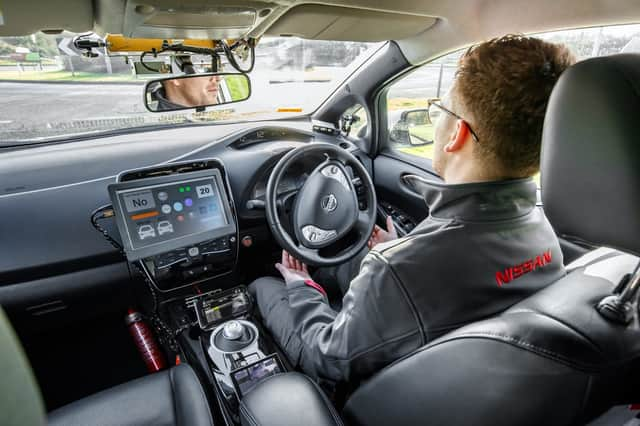Government examines plans for ‘hands-free’ driving on British roads by next year


The UK Government is consulting on new car technology that could see drivers hand over control to vehicles for prolonged periods at speeds of up to 70mph.
The Department for Transport (DfT) has launched a consultation seeking input into how an Automated Lane Keeping System (ALKS) could be used on British roads within the existing legal framework, ahead of its expected introduction in 2021.
Advertisement
Hide AdAdvertisement
Hide AdUnlike existing driver assistance systems, where drivers remain responsible for controlling the car and must keep their hands on the steering wheel, the aim of ALKS is to allow drivers to fully delegate the task of driving to the vehicle itself, offering hands-free driving for the first time in Britain.
According to the DfT ALKS is a “traffic jam chauffeur technology designed to control the lateral and longitudinal movement of the vehicle for an extended period without further driver command. At such times, the system is in primary control of the vehicle, and performs the driving task instead of the driver”.


The system requirements were set out in a new United Nations Economic Committee for Europe (UNECE) Regulation that was adopted in June and is expected to come into force early in 2021, meaning cars fitted with ALKS could be on sale in the UK next year.
Under the European framework, the system is intended to operate at speeds of up to 37mph on the motorway, meaning it can only be used in slow moving jams. However, the DfT has proposed that in Britain drivers could be allowed to use the system at speeds of up to 70mph.
Advertisement
Hide AdAdvertisement
Hide AdAmong the issues being considered by the consultation is whether cars fitted with the technology should be legally defined as an automated vehicle, which would mean the technology provider would be responsible for the safety of the vehicle when the system is engaged, rather than the driver.
It is also considering what the driver would be permitted to do while the car is in “self-driving” mode, using the car’s infotainment system, for example, and the challenges of safe transition between system and human control.
Transport Minister Rachel Maclean said: “Automated technology could make driving safer, smoother and easier for motorists and the UK should be the first country to see these benefits, attracting manufacturers to develop and test new technologies.
“The UK’s work in this area is world leading and the results from this call for evidence could be a significant step forward for this exciting technology.”
Advertisement
Hide AdAdvertisement
Hide AdMike Hawes, chief executive of the Society of Motor Manufacturers and Traders claimed the system could have a significant impact on road safety. He said: “This advanced technology is ready for roll out in new models from as early as 2021, so today’s announcement is a welcome step in preparing the UK for its use, so we can be among the first to grasp the benefits of this road safety revolution.”
How ALKS works
Like existing traffic jam assistance systems, ALKS uses a range of cameras and sensors to monitor a car’s position and speed as well as its surrounding environment, including roadside signs such as speed limits. In the right circumstances, it can then control steering and braking to maintain a safe position in traffic.
It requires the driver to actively engage it and is only designed for use on roads where pedestrians and cyclists are prohibited and where there is a physical barrier between traffic moving in opposite directions.
Under the UNECE regulation ALKS must also have driver availability and attentiveness monitoring to ensure the driver is able to resume control, and a transition alert that warns the driver they must take over control again if the system encounters a problem or reaches the limit of its operational scope. If the driver can’t take control, the system should use a “minimum risk manoeuvre” to bring the car to a safe stop.
Advertisement
Hide AdAdvertisement
Hide AdHowever, unlike existing systems drivers would be able to take their eyes off the road and potentially carry out other tasks, such as checking their phone or operating the car's media system while ALKS is active.